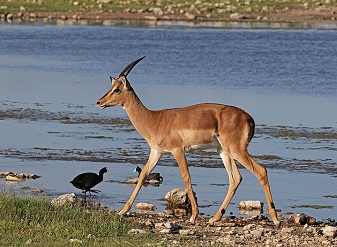Lion ( Panthera Leo)
Masai Mara National Reserve is home to the largest population of African big cats and famous for its greatest number of lions. It is estimated that there are close to 850 to 900 Lions in the reserve and surrounding conservancies that border the reserve. The 'Mara' as it is also known is generally considered one of the best places in Kenya and East Africa to see these magnificent animals in the wild on a Safari. Individual Lions (males) can hold huge territories ranging from 30 to 400 square kilometers. The lionesses (females) take the lead when it comes to hunting down the prey. From time to time the Males will assist with a hunt. Read more about Kenya Safari Lions in details at this page.



















































































